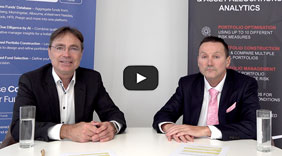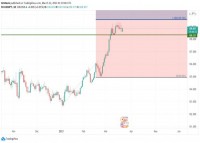|
By: Bailey McCann, Private Equity Strategies In recent years, the insurance policies held by parties in a private equity transaction have changed and expanded, to provide investors better piece of mind and firms with new ways to defend themselves if a claim arises. In our May issue we highlighted SRS data showing that two-thirds of deals have material closing issues, that result in claims. Here we speak with Kevin Maloy, Senior Managing Director, M&A, Special Practices, and Brian E. Dunphy Managing Director, Management & Professional Risk Group, of Crystal & Company, about issues in transaction insurance. Crystal & Company, is an insurance and risk management firm that advises on a broad range of investments and transactions. Crystal & Company is the second largest firm of its type in the United States and is a family owned and operated business. Clients include private equity firms, infrastructure funds, distressed investors and hedge funds. Within private equity, the two men note that there are three coverage areas that should be considered. The first is fund closure insurance. PE firms with vintage funds (i.e. all portfolio companies/investments sold or about to be sold) that have lingering periods of indemnification before all proceeds can be released to LPs can use this type of coverage to accelerate the release of those proceeds. Transactional risk insurance markets in conjunction with the broker community have developed a product to assist private equity firms in accelerating release of money back to LPs. A private equity firm can secure a blanket rep and warranty insurance policy, across all sold portfolio companies and transfer risk to insurance market. Therefore, if a buyer makes a claim for indemnification, alleging breach of representation, the insurance carrier will bear the responsible for claim, relieving the private equity firm of the need to withhold a portion of sale proceeds. “This type of insurance can dramatically limit the possibility of clawbacks,” Maloy explains. “It’s not a big market yet, but there are a few carriers that place it, and it can be helpful depending on the issues surrounding a particular transaction.” The second important coverage area is IPO insurance. When preparing for an IPO, companies need to take specific action as it relates to risk management and insurance programs. On issues of general corporate governance, firms should review insurance programs to ensure proper protection for assets/operations. Specifically, preparing for an IPO creates directors & officers’ liability risk well before the company is listed. By working with an advisor, companies can ensure they are well positioned to avoid those liabilities as much as possible. “On the private equity side, it is critical to mitigate the post IPO risk and the risk of setting up the IPO including road shows, marketing, disclosures, etc. These issues need to be understood as much as a year out or more from the IPO date, because you often see claims resulting from the process as much as post offering price/share fluctuations,” Maloy says. He notes that since the end of July there have been 7 executed or announced IPOs, indicating renewed momentum in that market. “These are conversations that we are having all of the time,” he says. Finally, an often overlooked component of a transaction is statutory and/or assumed Environmental Liability risk. This can allow for the use of insurance capital to transfer risk at a low cost as well as to assist a buyer and seller to facilitate/consummate a transaction. Whether acquiring a real estate, manufacturing, or retail company, both known and unknown environmental risks can prove costly. Any indemnification offered by the seller can be subject to a knowledge qualifier and a short indemnification time period (i.e. 18‐24 months). Additionally, the seller’s indemnity obligation is only as good as the ability and willingness of the indemnifying party to stand behind the indemnity obligation. “The issues here are a lot different than you’d expect,” Maloy says. “Firms take a hard look at conditions on the ground at the time of initial investment but there many not always be a consideration of those conditions post closing. You could run into issues like superfund actions impacting an exit, there are legacy risk issues, etc. So you have to ask yourself what you can transfer to a third party balance sheet like an insurance company.” He notes that the market for different types of insurance coverage to transfer these risks has expanded in recent years but deal parties will have to be prepared for what that means. “The thing that’s really going to move the needle for our clients is in the transaction space. If you can quantify a risk, we can pretty much find someone to transfer that risk for you, but you’re going to have to consider both the risk and affordability.” Those considerations may still be easy math for firms and investors to do, according to Maloy activity in this space is picking up. “There’s a big uptick in rep and warrant activity, the product is still relatively new, and it earned a reputation as maybe not being as effective as it was meant to be. But, what we’ve noticed is, as the market has matured, we’ve seen terms and conditions get quite broad, and costs go way down. Product is becoming more common in the US and is extremely common outside of the US. Our activity and inquiry in this space is up well over 100%.” He explains that rep and warrant insurance is now viewed as a more reliable method of bridging the differences between buyers and sellers. Buyers are getting more comfortable accepting an insurance policy as recourse in the event of misrepresentation in a deal. Directors and Officers (D&O) is also expanding. “The policies that are in existence right now are really pretty broad and they’ve broadened over the last 8-9 years. Insurance is a reactionary industry, so things aren’t going to be granted or excluded without a precipitating event. So, if you get a groundswell around an issue, as soon as on insurer says yes, everyone is going to jump in. The number of underwriters offering D&O has expanded dramatically,” Dunphy says.
| |
|
This article was published in Opalesque's Private Equity Strategies our monthly research update on the global private equity landscape including all sectors and market caps.
|
Private Equity Strategies
Tools of The Trade: Transaction Insurance, What Firms Need To Know |
|





 RSS
RSS











